You think you might have bed bugs but you just can’t seem to find them. You call the local pest control company and they can’t get out for a week. You haven’t slept a wink in three days and you just have to know it bed bugs are sharing your bed with you. We understand that time is of the essence and sleep is crucial so we have a created a DIY professional bed bug inspection checklist to help you find those creepy crawlies the way we find them. Before you start looking, grab a flashlight, even if you think you don’t need one. The flashlight will make things stand out that you could otherwise miss. It is also a good idea to have a container to collect anything suspicious.
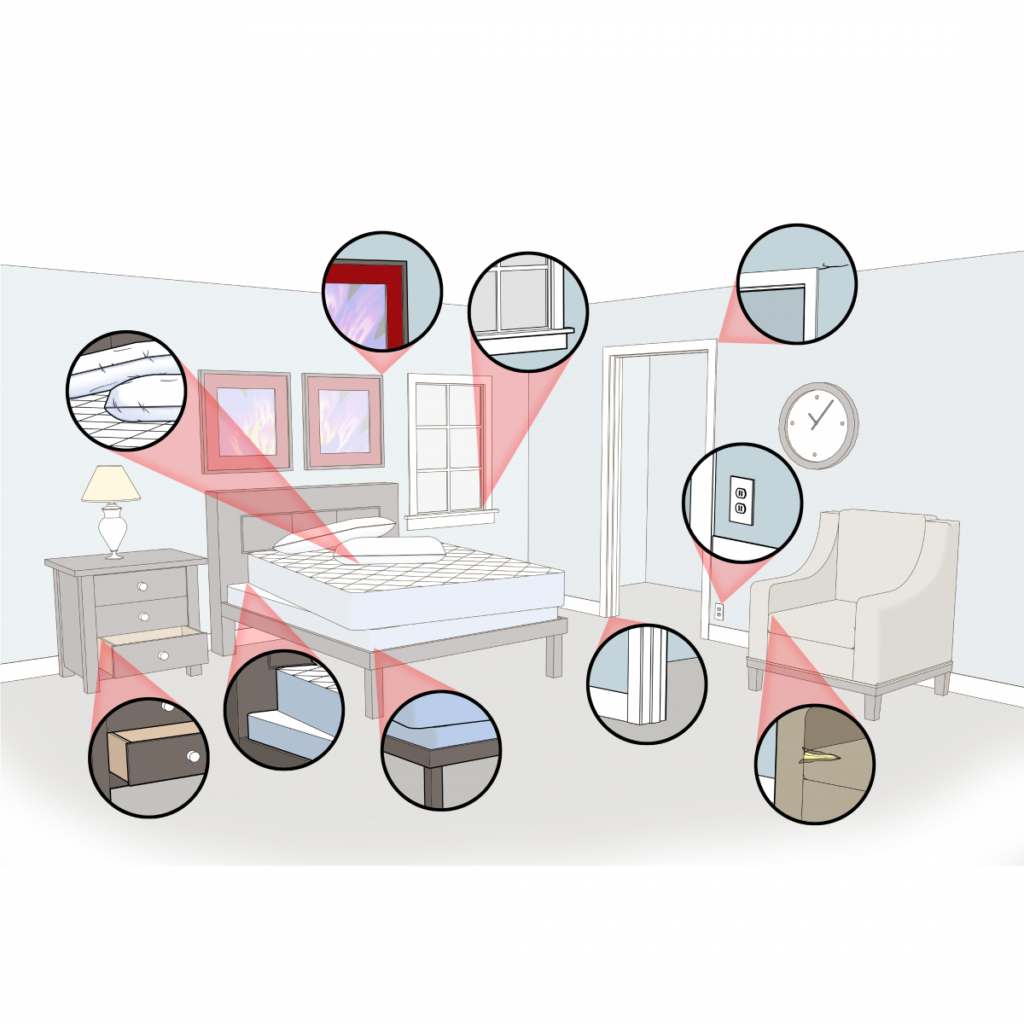
Bed bug facts that will help you during your inspection.
- It is important to know that bed bugs are very reclusive and are excellent at hiding in places where they could be very difficult to locate. Be sure that you inspect every crack and crevice.
- Bed bugs prefer to hide near their host. Locations such as the mattress, box spring, bed frame, headboard, nightstand, and other bedroom furniture are bed bug hotspots; but don’t overlook items hanging on your walls.
- As bed bugs feed they will leave behind fecal spotting. These will appear as small dark brown, to black, spots.
- Bed bug eggs are about the size of the ball on a ballpoint pen. They are usually a cloudy-white color and are usually clustered together.
- Bed bugs go through simple metamorphosis, meaning they go from egg, to nymph, to adult. The nymphs can be just smaller than a sesame seed, and grow to about the size of an apple seed. They also range in color from as light as a sesame seed to as dark as an apple seed. As they grow, nymphs shed their exoskeleton. As you inspect, make sure to look for these castings.
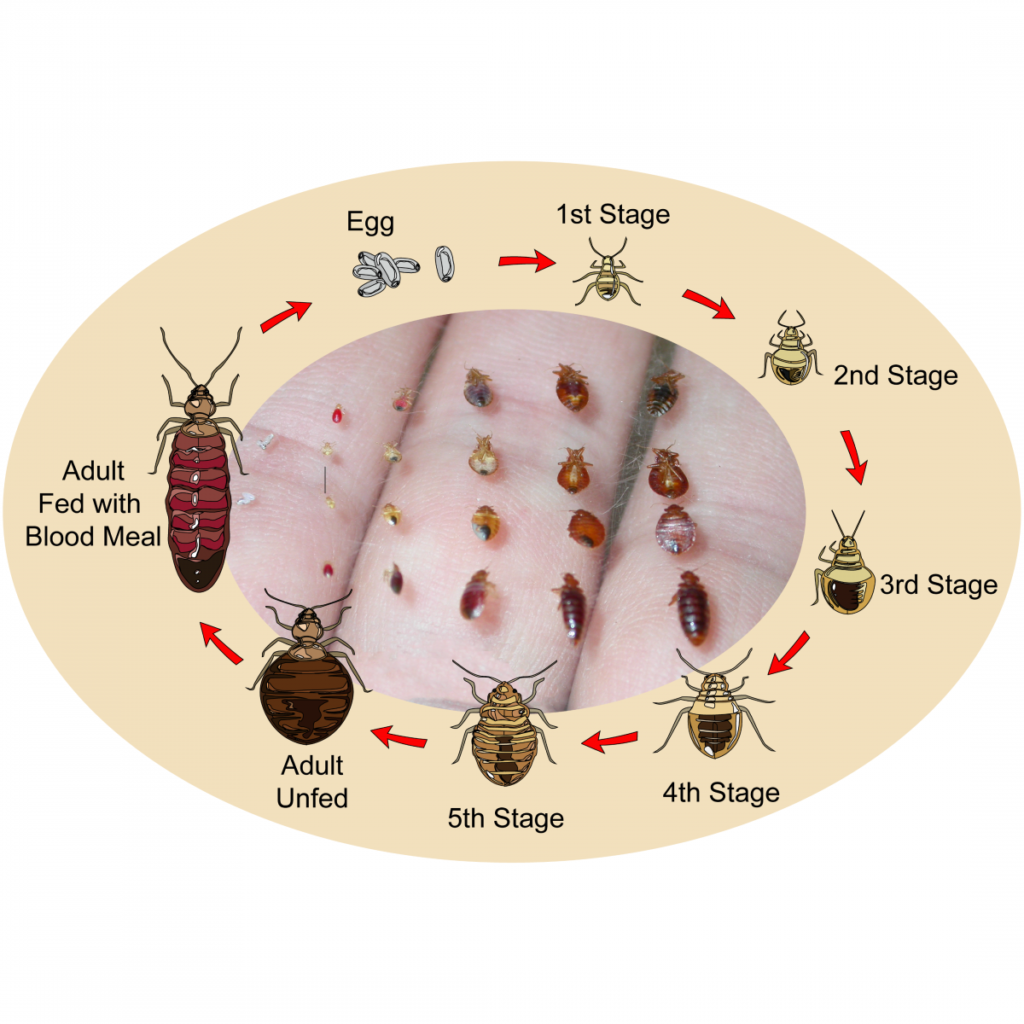
Basic inspection protocols.
- Use gloves to protect from hazards that may be encountered during inspection.
- If moving furniture is necessary, have someone help you.
- Be careful around antiques and other valuable possessions that may be fragile.
- Bed bugs may travel from room to room or floor to floor via utility lines, structural flaws, maid carts, bell carts, or other methods. Having a firm understanding of how people move throughout the structure will help you identify and address all avenues that bed bugs may utilize to spread.
As you inspect, look for any bed bug signs. If you do find anything suspicious collect it in a container or take a picture. You can email pictures of what you find to [email protected] for positive identification.
Start with the room where bites have occurred.
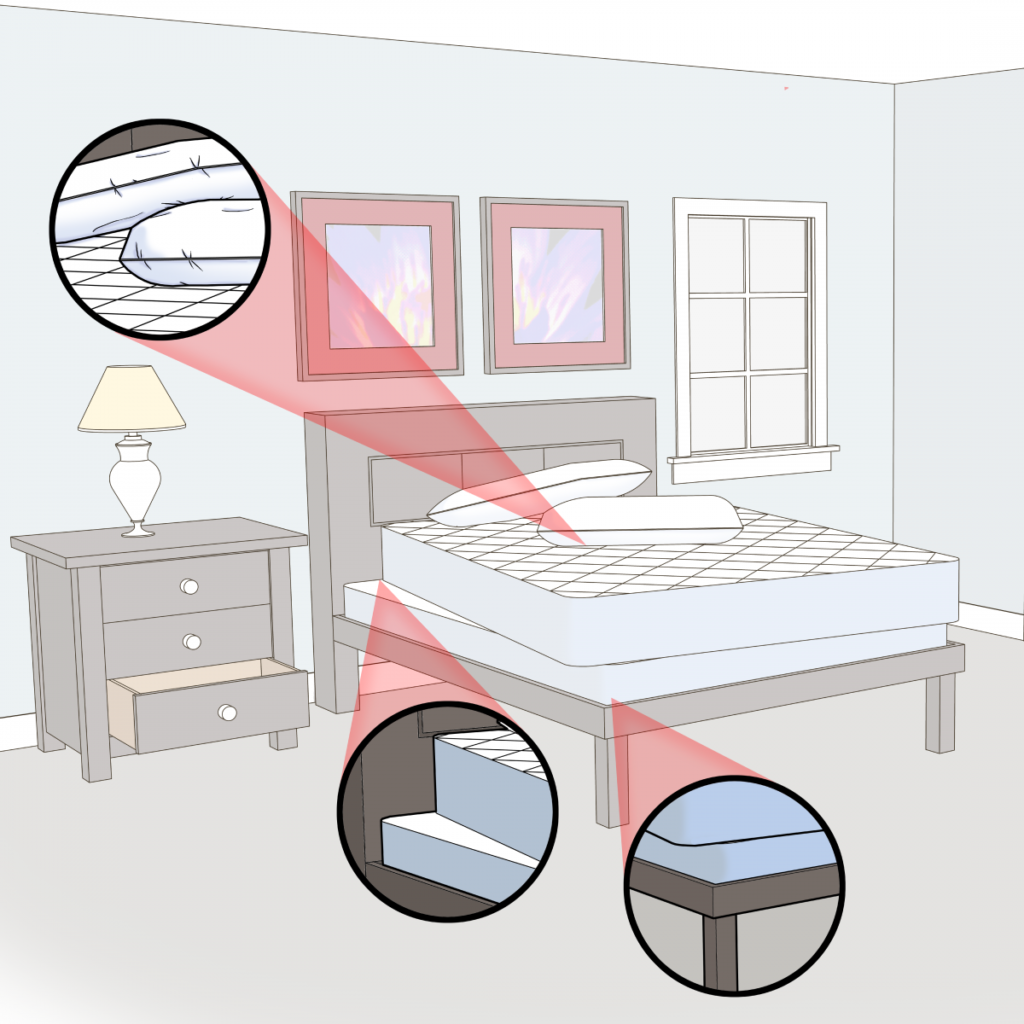
The first piece of furniture to inspect is the bed.
- Take pillow cases off and inspect the pillow and the inside of the pillowcase.
- Peel back each blanket, one at a time, inspecting the outside of each blanket.
- Once you have all the blankets inspect the fitted sheet.
- Remove the fitted sheet and inspect all folds of the mattress.
- Remove the mattress and inspect the top and bottom of the box spring. If necessary, remove the fiber that is stapled to the bottom and inspect all inner surfaces.
- Inspect the bed frame, and all sides of the headboard.
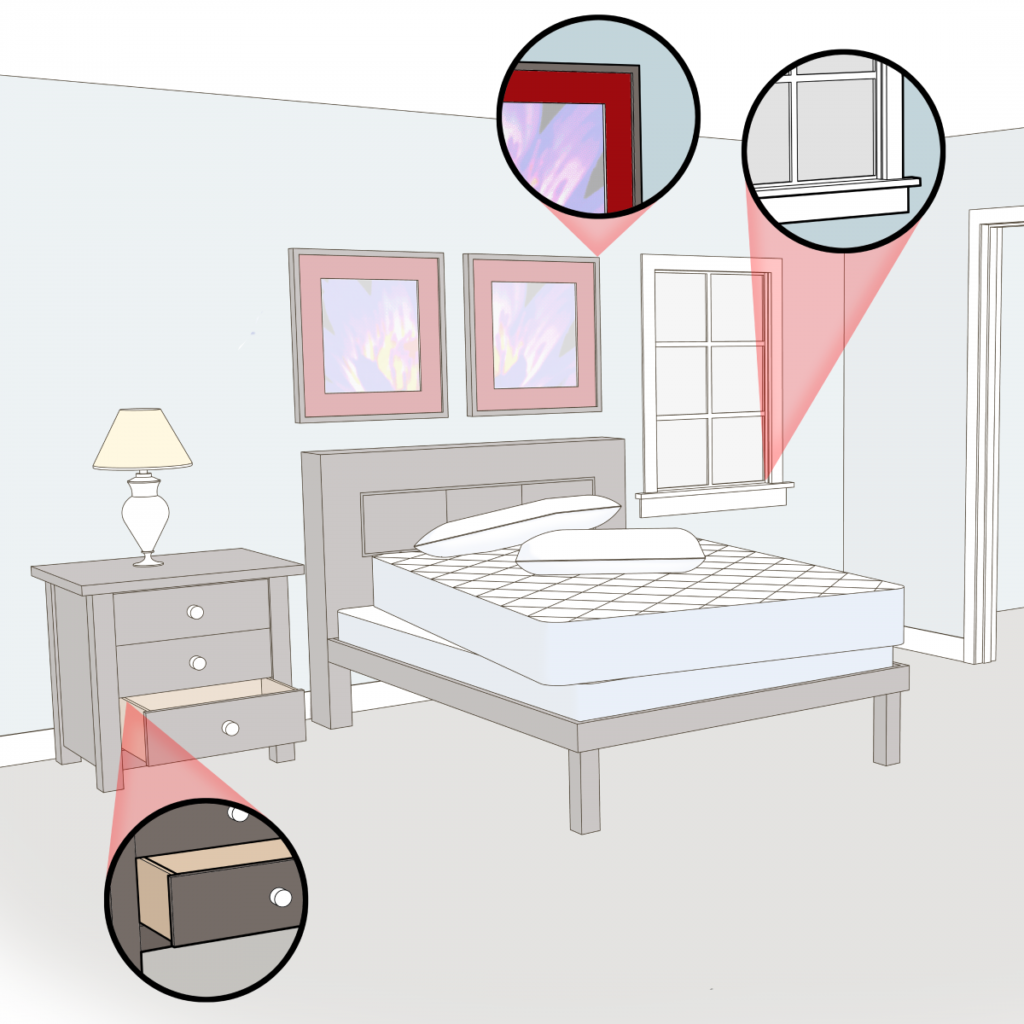
Inspect any furniture next to the bed.
- Move the nightstand away from the wall and inspect every outer surface.
- Remove any drawers and inspect all surfaces of each drawer.
- Using your flashlight, inspect all inner surfaces. Be sure to check every crack and crevice.
- Turn the nightstand over and inspect the bottom.
- Use these same steps to inspect dressers or any other furniture in your home.
- Inspect the rest of the areas as needed.
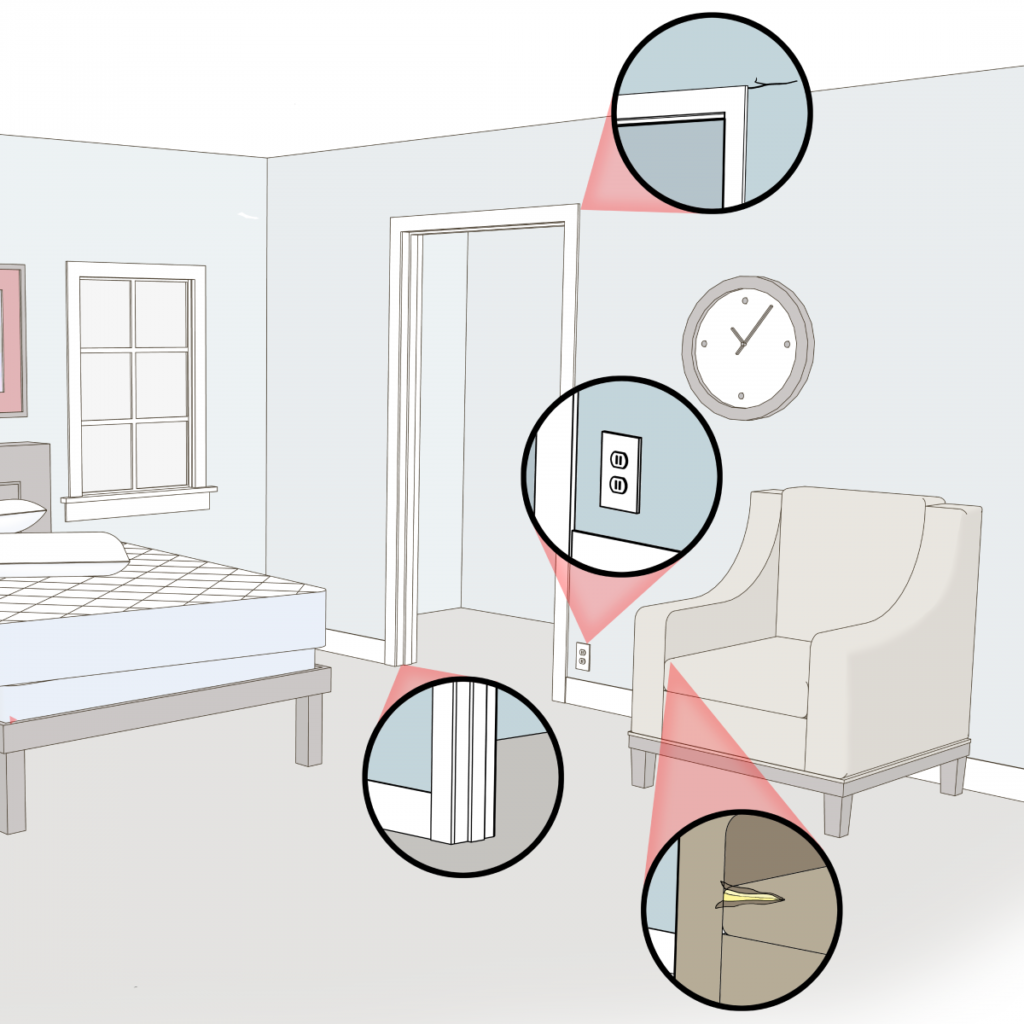
Regular inspections can enhance the possibilities of early detection and prevention of a
significant bed bug infestation. If bed bugs continue to be a problem, and you can’t find them despite your best inspection efforts, it’s likely time to consider calling a professional.


